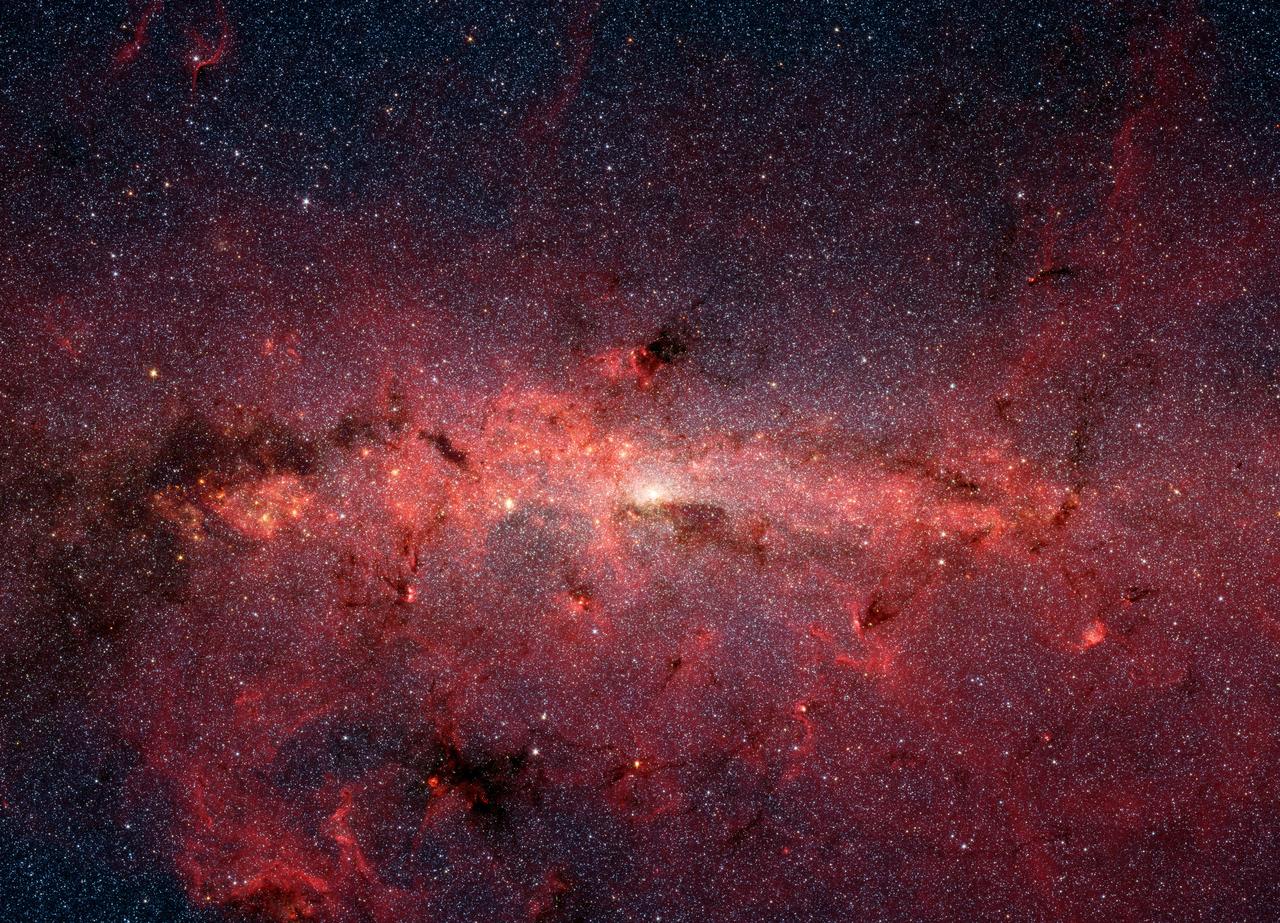The Milky Way Is Full of Toxic, Sticky Grease

Space: It's dark, cold and, in most parts of the galaxy, probably pretty sticky.
Swirled amid the dust, soot and electromagnetic radiation that sits among the stars of the Milky Way, there is also a whole mess of toxic grease. This "space grease" — actually an oily form of hydrogen-bound carbon called aliphatic carbon — is one of several types of carbon leaked into empty space by blazing stars, and may be among the key ingredients in the formation of new stars and planets, astronomers say.
Precisely how much grease is out there lubing up the Milky Way? Scientists haven't known for sure, but a new paper published June 13 in the journal Monthly Notices of the Royal Astronomical Society proposes an answer: enough grease to really mess up the windshield on your spaceship. [Interstellar Travel: 7 Futuristic Spacecrafts to Explore the Cosmos]
According to a team of astronomers from the University of New South Wales (UNSW) in Australia and Ege Universityin Turkey, there may be five times more space grease permeating the Milky Way than previous estimates indicated. By creating a space-grease proxy in their laboratory and comparing its composition to previous observations of the galaxy, the researchers found that there may be about 11 billion trillion trillion tons (or 11 with 33 zeros after it) of greasy carbon molecules in our galaxy — the equivalent of 40 trillion trillion trillion packs of butter.
"This space grease is not the kind of thing you'd want to spread on a slice of toast," study author Tim Schmidt, a professor of chemistry at UNSW, said in a statement. "It's dirty, likely toxic and only forms in the environment of interstellar space — and our laboratory." (Schmidt added that the solar wind likely keeps this grease from gumming up our own solar system.)
In their new study, Schmidt and his colleagues took a close-up look at space grease by making some of their own. To mimic the process by which stars synthesize gases and blast them into the interstellar medium (that's what astronomers call the stuff between stars), the team expanded a carbon-rich plasma, or ionized gas, in a vacuum chamber. From this plasma came a dust byproduct sort of like the interstellar dust where space grease spreads.
Using spectroscopy, the team determined how strongly the greasy dust absorbed certain wavelengths of infrared light, which would affect how instruments can pick up on its presence. With this data, the team could then look to prior observations of nearby stars to determine "how much greasy carbon is in the line of sight of various stars," Schmidt told The Guardian.
Sign up for the Live Science daily newsletter now
Get the world’s most fascinating discoveries delivered straight to your inbox.
Through these observations, the researchers determined that there are about 100 space-grease atoms for every 1 million hydrogen atoms — accounting for between one-quarter and one-half of the galaxy's interstellar carbon.
This knowledge of space grease could help scientists understand our entire galaxy better, the researchers wrote. Carbon is thought to be an essential building block of life, so knowing how much carbon is available in various forms throughout the interstellar medium could give scientists a clue to the likelihood that other life-harboring solar systems could form (or already have formed) in the Milky Way. For Schmidt, the results of this study are cause for optimism.
"It's intriguing that organic material of this kind — material that gets incorporated into planetary systems — is so abundant," Schmidt said.
Originally published on Live Science.

Brandon is the space/physics editor at Live Science. His writing has appeared in The Washington Post, Reader's Digest, CBS.com, the Richard Dawkins Foundation website and other outlets. He holds a bachelor's degree in creative writing from the University of Arizona, with minors in journalism and media arts. He enjoys writing most about space, geoscience and the mysteries of the universe.









